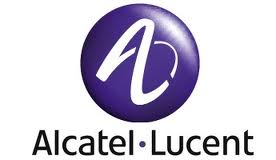Alcatel-Lucent

Alcatel-Lucent- Enterprise Business Group is a world leader in the delivery of communications solutions for businesses, including contact center software, small/medium business telephony and IP addres
With operations in 130 countries, Alcatel-Lucent is the first truly global communications solutions provider, offering the most complete end-to-end portfolio of solutions and services in the industry. Our passionate and experienced team converts challenges into opportunities in the areas of third-generation mobile networking, metro optical and packet, circuit-to-packet, broadband access, advanced network and professional services, and next-generation operations support systems.
Alcatel-Lucent Postings
8 technical articles »
High Frequency DK and DF Test Methods Comparison High Density Packaging User Group (HDP) Project
Mar 24, 2016 | Karl Sauter; Oracle Corporation, Joe Smetana; Alcatel-Lucent
Today's Electronic Industry is changing at a high pace. The root causes are manifold. So world population is growing up to eight billions and gives new challenges in terms of urbanization, mobility and connectivity. Consequently, there will raise up a lot of new business models for the electronic industry. Connectivity will take a large influence on our lives. Concepts like Industry 4.0, internet of things, M2M communication, smart homes or communication in or to cars are growing up. All these applications are based on the same demanding requirement – a high amount of data and increased data transfer rate. These arguments bring up large challenges to the Printed Circuit Board (PCB) design and manufacturing.
This paper investigates the impact of different PCB manufacturing technologies and their relation to their high frequency behavior. In the course of the paper a brief overview of PCB manufacturing capabilities is be presented. Moreover, signal losses in terms of frequency, design, manufacturing processes, and substrate materials are investigated. The aim of this paper is, to develop a concept to use materials in combination with optimized PCB manufacturing processes, which allows a significant reduction of losses and increased signal quality....
Novel Approaches for Minimizing Pad Cratering
Oct 29, 2015 | Chen Xu, Yunhu Lin; Alcatel-Lucent, Yuan Zeng, Pericles A. Kondos; Unovis-Solutions.
With the electronic industry moving towards lead-free assembly, traditional SnPb-compatible laminates need to be replaced with lead-free compatible laminates that can withstand the higher reflow temperature required by lead-free solders. Lead-free compatible laminates with improved heat resistance have been developed to meet this challenge but they are typically more brittle than SnPb laminates causing some to be more susceptible to pad cratering. In this paper, two novel approaches for minimizing pad cratering will be discussed. Preliminary results which validate the two approaches will also be presented....
Jun 21, 2012 | Richard Coyle, Richard Popowich, Peter Read, and Debra Fleming - Alcatel-Lucent, Raiyo Aspandiar, Alan Donaldson, Stephen Tisdale, and Vasu Vasudevan - Intel Corporation, Iulia Muntele, Robert Kinyanjui - Sanmina-SCI Corporation
First published in the 2012 IPC APEX EXPO technical conference proceedings. Most high reliability electronic equipment producers continue to manufacture and support tin-lead (SnPb) electronic products despite the increasing trend for design and conversion...
Silicon Microelectronics Technology
May 06, 1999 | James T. Clemens
This paper begins with a historical review of that revolution, from the first integrated circuit to modern very large scale integration (VLSI) technology, and then reviews the development of present-day microelectronics manufacturing technology......
The Future of Solid-State Electronics
May 06, 1999 | William F. Brinkman, Mark R. Pinto
This paper explores the direction in which IC technology is headed, highlights potential roadblocks and possible solutions, and discusses some of the physical considerations that could determine the ultimate limits of integration....
The History of the Microprocessor
May 06, 1999 | Michael R. Betker, John S. Fernando, Shaun P. Whalen
Invented in 1971, the microprocessor evolved from the inventions of the transistor (1947) and the integrated circuit (1958). Essentially a computer on a chip, it is the most advanced application of the transistor. The influence of the microprocessor today is well known, but in 1971 the effect the microprocessor would have on everyday life was a vision beyond even those who created it. This paper presents the history of the microprocessor in the context of the technology and applications that drove its continued advancements....
Key Steps to the Integrated Circuit
May 06, 1999 | Mark Melliar-Smith, Douglas E. Haggan, William W. Troutman
This paper traces the key steps that led to the invention of the integrated circuit (IC). The first part of this paper reviews the steady improvements in the performance and fabrication of single transistors in the decade after the Bell Labs breakthrough work in 1947. It sketches the various developments needed to produce a practical IC. In addition, the more advanced processes such as diffusion, oxide masking, photolithography, and epitaxy, which culminated in the planar process, are summarized....
The Foundation of the Silicon Age
May 06, 1999 | Ian M. Ross
The invention of the transistor almost fifty years ago was one of the most important technical developments of this century. It has had profound impact on the way we live and the way we work. This paper describes the events that led to the invention of the point-contact transistor in December of 1947. It continues with the development of the theory of the junction transistor in early 1948 and the fabrication of the first grown-junction transistor in 1950....






